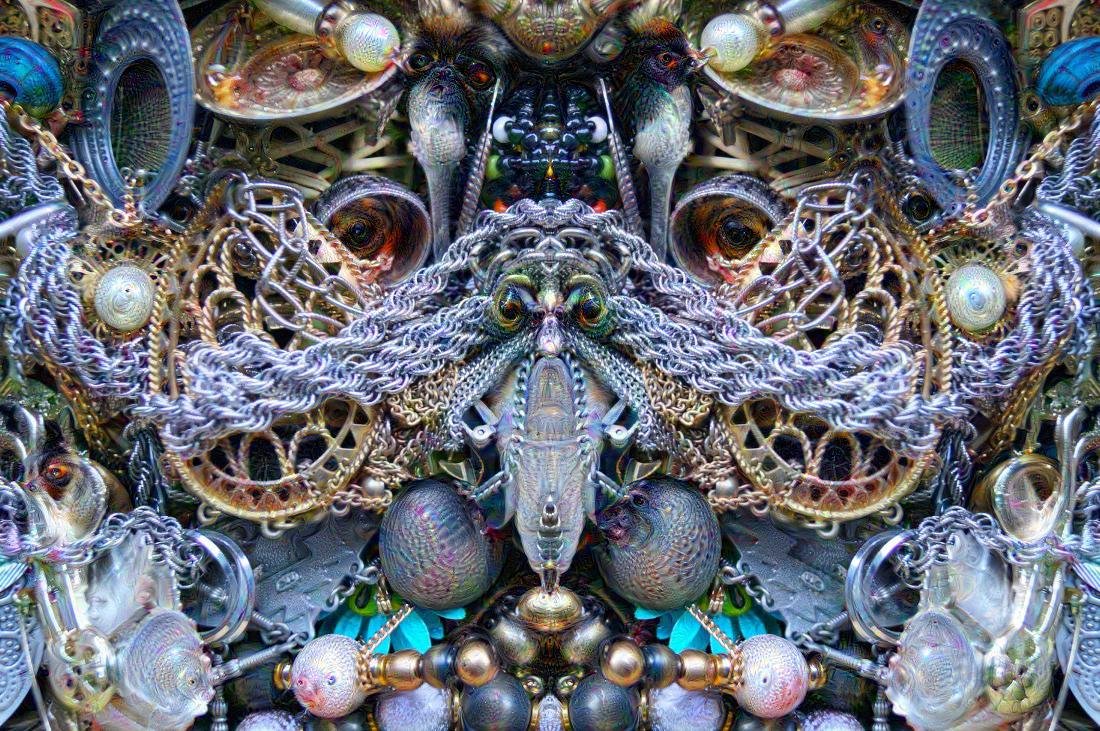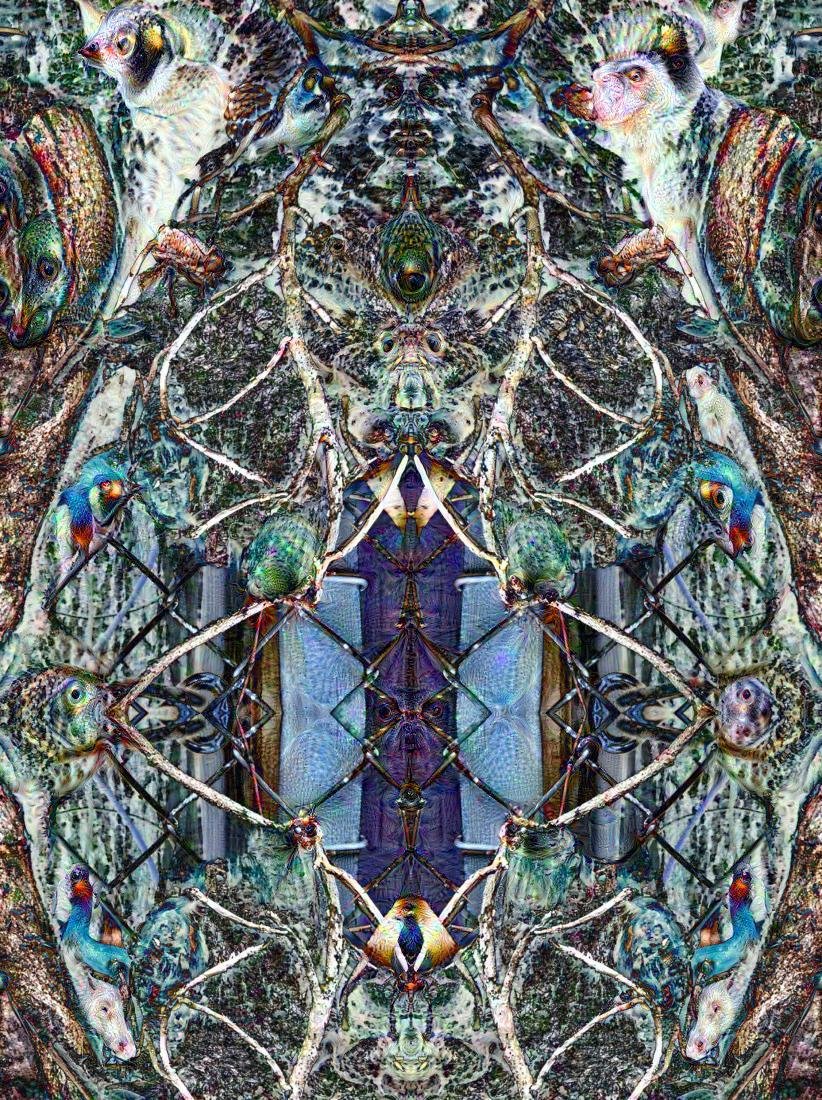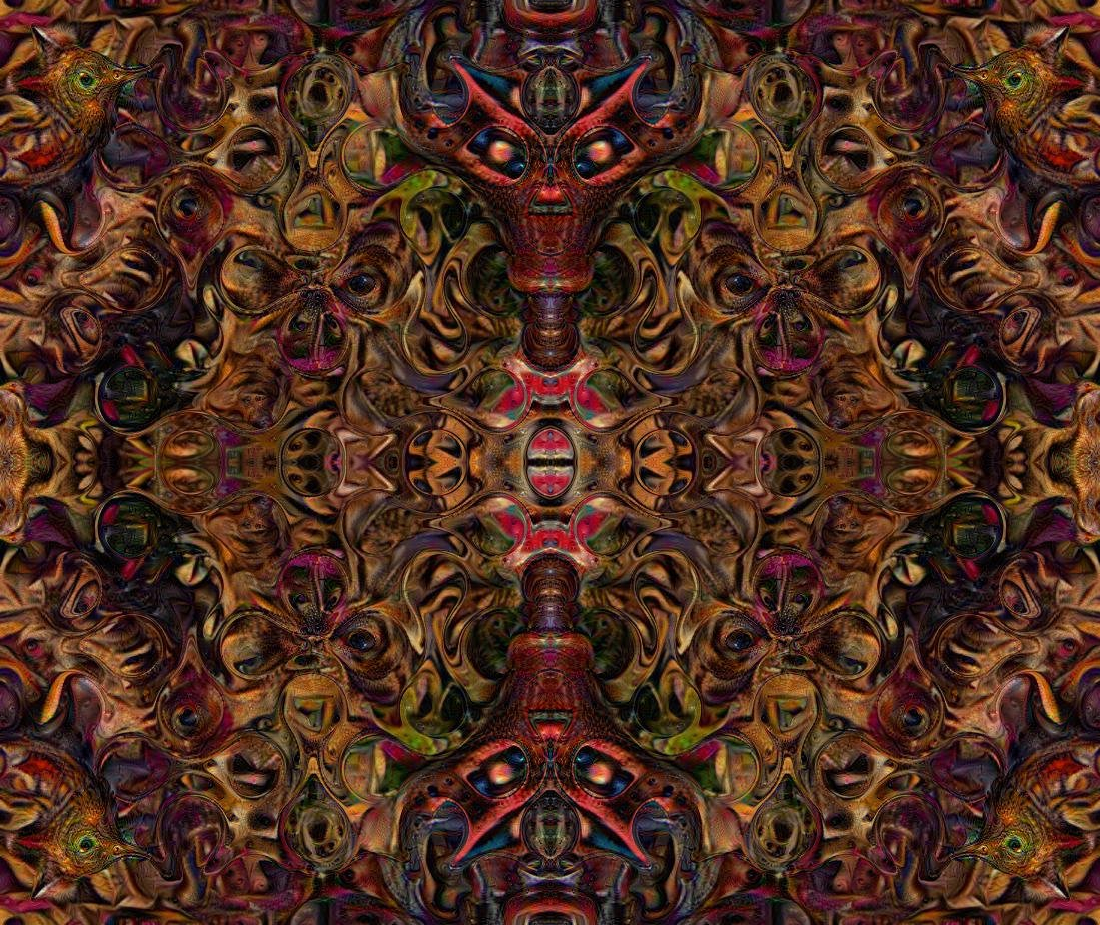
Sea Dream (Stephen Calhoun)
There is so much of theoretical and practical interest in supposing that art, artistry, and the artistic experience, transcend most, if not all, the closely defended normative socio-cultural-philosophical perspectives about WHAT IS ART? that what I would term “platform issues” become hidden away almost from the get-go.
Google’s Deep Dream platform embeds bizarre animalistic features in uploaded images. Because Google rolls out Deep Dream with a lot of cultural force, the new creative platform receives a huge amount of attention.
Meanwhile, Leonardo Solaas’s Dreamlines (2005-2014) and Doodl (2010-2016), neither of which are one-tricksters like Deep Dream, received almost no attention. Except, there is a creative sub-culture concerned with computer-generated and computer-assisted art. It has been around for fifty years. The first computer-generated art dates back to the sixties. This came to be a movement but, such so-called machine art remains a sub-culture as against what is termed New Media. And, oddly, Digital Art has come to be the catch-all term for anything that is unacceptably ‘facile;’ and so it is that an absurd dividing line has been etched.

Gate Dream (Stephen Calhoun) 2016
Can Google’s Deep Dream become an art machine?
“Deep Dream was never about the aesthetics for me,” says Akten, a fine artist and PhD candidate at Goldsmiths University in London. Instead he was impressed by the way the machine learning manages to mimic and interact with human visual perception.
“It might look like Deep Dream is generating say, sparrow’s faces in clouds, but what it is actually doing is generating patterned noise, which our brains try to find meaning in.” Akten. “It creates just enough of a sparrow’s head in a cloud, so that our brains find the rest. Visually, our minds and Deep Dream are doing exactly the same thing. It’s such a perfect mirror. I love that conceptual aspect.”
“which our brains try to find meaning in.”
Palm slap! But, our brains aren’t finding, our brains are composing.

The Law Dream (Stephen Calhoun) 2016
Because Google Deep Dream traffics in its single trick, and the results are almost always grotesque, it isn’t an appealing tool. Where there is zero control, the end product is not one I really want to see! Still, the above piece intrigues me and likely will be my last creative word, or image, using the GDD facility.
Setting aside the usual prejudices of artists who think any manipulation of pixels is, (for lack of a better all-encompassing term,) decadent, the fundamental expansion of facility provided by processing power, whether it is a Photoshop plug-in or a one-trick neural network, or, advanced repainting as is the case with Processing apps, and Python/Java driven search and manipulation, plus all the other “facile” application platforms, at a minimum reveals possibilities which are not otherwise available.
Add to this elements of trial-and-error, serendipity, and under-determination, and new media techniques put a ton of pressure on, for example, the social and hermeneutic theories, theories which are concerned with masterful individual artistic projections of intentionality within social-historical contexts. I have a lot to assert about all of this from the perspective of a creative person leveraging other person’s programming innovation for the sake of producing visual experiences, and, producing art.
Ironically, Google’s Deep Dream is a play-toy when it is compared with software, the brilliant browser interfaces of Leonardo Solaas, Dreamlines, and the Doodl dashboard (2010-2016,) and, a handful of unique iPad apps. I used the Doodl dashboard to help me create most of my generative art work between 2014-2015. See: Sun Ra In Heaven (2015).
